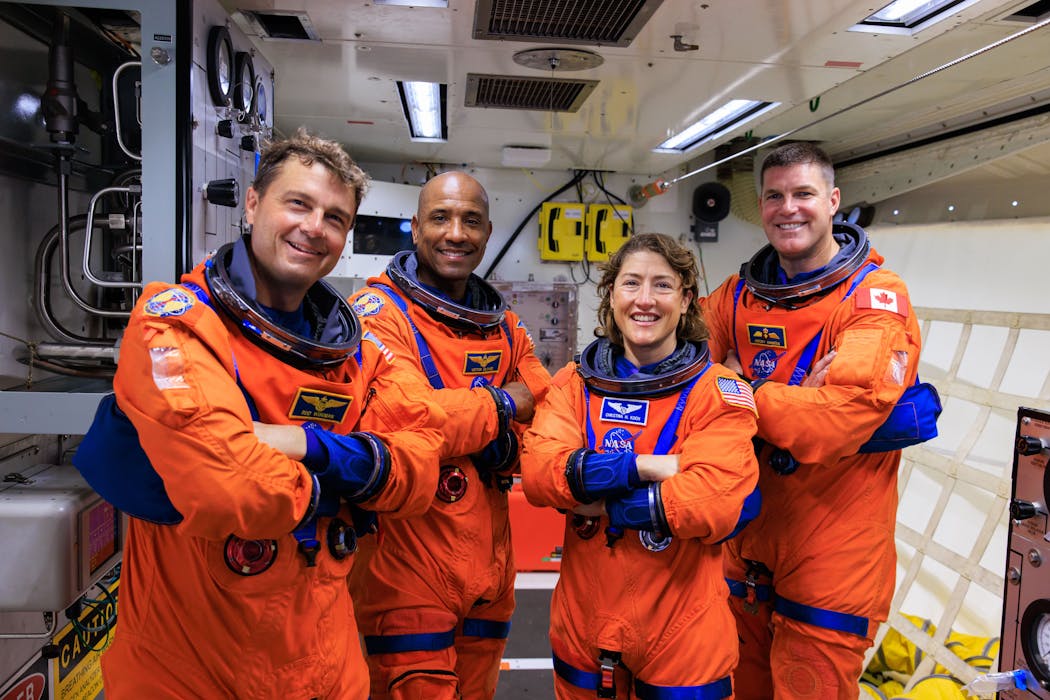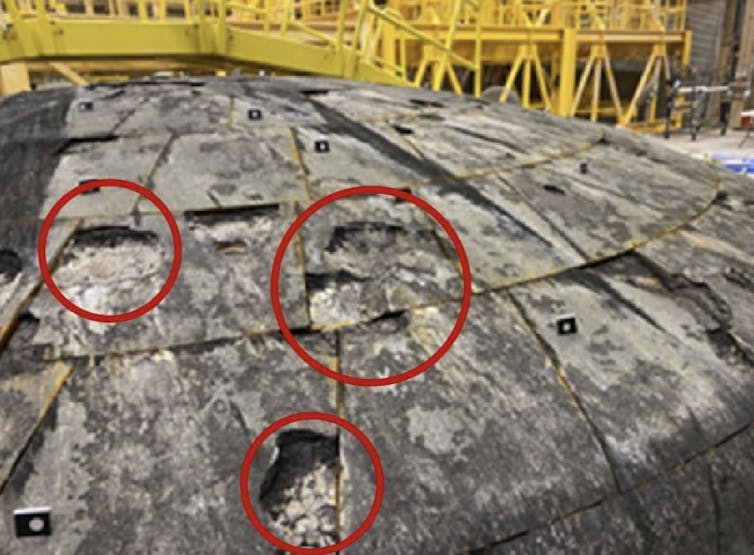Nasa’s Artemis II mission is crucial as doubts build that America can beat China back to the Moon

For the first time in half a century, America stands on the threshold of sending astronauts back to the Moon. Slated for launch no earlier than February 2026, Artemis II will not land on the lunar surface, but it will carry four astronauts on a flyby of Earth’s only natural satellite.
The ten day mission will take the crew further from Earth than any human has travelled since the Apollo missions. It’s a crucial test of Nasa’s Orion spacecraft and Space Launch System (SLS) rocket, determining whether the United States can safely push beyond low Earth orbit once again. The stakes are immense: technical risks, billions in financial commitments and an increasingly competitive international race for lunar leadership.
Indeed, even vocal supporters of America’s effort are now expressing doubts that Nasa will be able to beat the Chinese space agency in the race to send humans back to the lunar surface. China has been making great strides in its lunar effort and is targeting a Moon landing by 2030. America’s programme, on the other hand, is beset with problems, including the lack of a working lunar landing system and lunar surface spacesuits that are behind schedule.
Further underlining the US’ now precarious hopes of returning first to the Moon, China completed a critical landing and take off test of its crewed lunar lander in August.
The astronauts aboard Artemis II will test critical systems required to perform in the harsh deep space environment. After separation from the core stage of their rocket, they will confront an extreme environment where deep space rescue is impossible.
During the uncrewed Artemis I mission in 2022, the Orion crew module sustained unexpectedly high levels of damage to its heat shield, during the return through Earth’s atmosphere. The heat shield protects the occupants of the spacecraft from the superheated gases around the spacecraft during re entry.
Nasa has been working hard to resolve this problem ahead of Orion’s first mission with humans aboard. The problem highlights the complexity of returning to lunar travel after a 50-year hiatus.

Landing challenges
Even if Artemis II is successful, major uncertainties surround the next mission: Artemis III. This is intended to be the first American mission to return to the lunar surface since 1972. The landing vehicle will be based on SpaceX’s Starship vehicle and is known as the Starship Human Landing System (HLS). SpaceX has been carrying out test flights of Starship from its launch site in southern Texas. While the most recent of these was successful, several previous flights resulted in spectacular explosions.
However, Starship faces many further challenges before it can be used to carry astronauts down to the lunar surface. The vehicle must demonstrate that it can refuel in orbit, connecting to another Starship that acts solely as a tanker. The 50 metres tall spacecraft must also be able to land vertically on the Moon. Its ability to act as a lunar habitat for the astronauts creates opportunities for extended missions, but its size and complexity creates risk too.
While these hurdles remain unresolved, Nasa faces the possibility of having to reimagine Artemis III, including the possibility that the mission becomes another lunar flyby rather than the long-awaited return to the surface.
Artemis is ambitious, but also precarious. Each SLS rocket costs US $2 billion (£1.4 billion) to launch. This extraordinary cost has already raised questions in Congress about long term sustainability. As such, some US lawmakers are pushing for a transition to cheaper commercial rockets after Artemis III. For now, funding is secured through the 2025 “One Big Beautiful Bill Act”, but the political consensus may not last.
International competition adds urgency to the financial considerations. The implications of lunar leadership extend beyond national prestige. They include access to lunar resources, such as the water ice locked up at the lunar poles, which could be used to support a Moon base. Nasa’s acting administrator Sean Duffy has asserted that “we are going to beat the Chinese to the Moon” , echoing the cold war narrative 63 years on from John F Kennedy’s “we choose to go to the Moon” speech in 1962.
But Nasa must also demonstrate that Artemis delivers scientific value beyond national prestige. It must justify the massive investment through discoveries that benefit humanity’s understanding of the Moon, Earth and solar system.
Lunar space station
The intended impact of the lunar return extends far beyond individual missions. A space station around the Moon called the The Lunar Gateway represents Nasa’s commitment to a sustained presence rather than Apollo-style flags-and-footprints landings. The Gateway’s first modules, scheduled for a 2027 launch, will create a staging point for future lunar operations and deep space exploration.
The Artemis IV mission will deliver additional Gateway modules in 2028, while Artemis V in 2030 will introduce Blue Origin’s competing lunar lander, reducing dependence on SpaceX as a single contractor. The cargo version of Blue Origin’s lander could be ready long before that, as the company is hoping to launch the uncrewed vehicle on a mission to the lunar surface sometime this year.
Next year’s Artemis II mission is not just another spaceflight, it is the proving ground for America’s return to the Moon. It is the test of whether the United States can sustain its most ambitious exploration program since Apollo. It is also the foundation for future voyages to Mars. Success will reaffirm American leadership in space. Failure could cede it to others.
Jessie Osborne does not work for, consult, own shares in or receive funding from any company or organisation that would benefit from this article, and has disclosed no relevant affiliations beyond their academic appointment.


